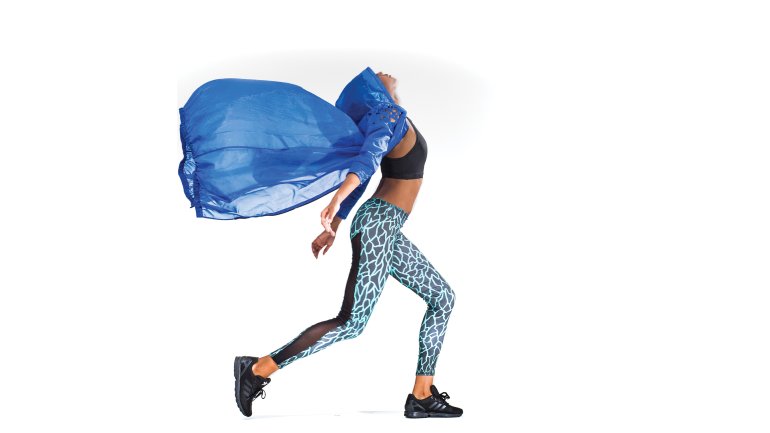Fashion Forward
Fashion Forward
What if you could go online, create your own custom clothing using templates provided by name-brand designers, then have those garments made to order in your community? Or wear workout clothes that could tell you, via sensors and a phone app, when you’re putting too much stress on your joints?
Such innovations are afoot in the fashion industry, and the TechStyleLab is preparing the next generation of designers. Part of the Fashion School of the College of the Arts at Kent State University in Ohio, the lab aims to foster creative thinking about textiles in our digital, on-demand age. Using a range of digital tools – textile printer, laser cutter, body scanner, 3D printer, knitting and embroidery machines – students investigate new possibilities for designing and making fashion textiles, and the functions they can perform.
“We’re trying to experiment with this spectrum of where fashion exists in the context of new technologies,” says J.R. Campbell, professor and director of the Fashion School. While mass production still makes sense for basics like jeans and T-shirts, he notes, digital tools are opening up other creative approaches for aesthetically oriented apparel. “Within that spectrum, when is it most appropriate to use the digital tools? Our students have the responsibility to learn and understand how we market and consume products, to make sure we’re designing to the right need, and what the digitally driven design process brings to that conversation.”
Back when Campbell got his MFA in textile arts and costume design at the University of California, Davis, in 1996, the first wide-format digital ink-jet fabric printers were coming on the market. He became an early explorer of this emerging technology, notably as a research fellow at the Centre for Advanced Textiles at the Glasgow School of Art in Scotland. There, in 2008, he led an experimental project with the avant-garde design studio Timorous Beasties, in which customers used a Wii remote to select motifs and create their own compositions for printed fabric.
“What we showed the designers was a way to truly expand their product base and customer base,” says Campbell, 45. When he came to Kent State and launched the TechStyleLab the following year, he had that idea and model in mind. Someday, Campbell suggests, instead of a factory-to-store chain involving transporting materials and goods to and from several countries, digital textile technology may enable less wasteful, more sustainable methods – for instance, a commercial infrastructure where your customized clothing is produced at a textile lab near your home, similar to a cottage industry. For now, the Kent State lab is already collaborating on fabrics with local businesses, and looking at what both designers and consumers will need to know to navigate this potential paradigm.
The TechStyleLab also hosts an annual weekend Hackathon, bringing together students in fashion, computer science, engineering, math, and physics from around the country. The goal: to come up with apps and software components that tie digital thinking to physical objects involving some form of textile.
At the end, participants present their working prototypes for “a wide range of really cool ideas,” as Campbell says. “They’re thinking beyond beauty or basic performance, to help solve real problems through wearable approaches.” One group designed a garment for people who are visually impaired, with sensors that provide an auditory warning when the wearer gets near an object. Another team dreamed up a watchband for people with early-stage Alzheimer’s that can transmit their location to caretakers.
“That’s part of what I love about the generation of students we’re teaching right now,” says Campbell. “They want to design beautiful things. But if there’s an opportunity to have an impact, they totally want to jump on that.”
The TechStyleLab will present a symposium and “sandbox” for hands-on collaboration in the lab (January 26 – 27) in conjunction with its annual Fashion/Tech Hackathon (January 27 – 29). Joyce Lovelace is American Craft’s contributing editor.

